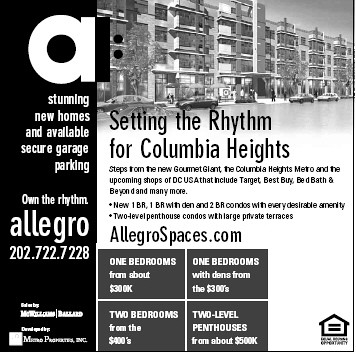Preservation problems in San Francisco (and elsewhere)
The New York Times has a story, "An Unlikely Group Rebels Against Preservation Districts," about resistance to historic preservation designation in San Francisco, because residents see the regulation that comes with it as a burden.
The article discusses how with a recent change in the law, the historic preservation review board in San Francisco now has enforcement powers and it didn't before.
But as the entry "Food for Thought…" from the Preservation Maryland blog states:
I find it curious that everyone thinks of anything having to do with historic preservation as being the ‘historical society.’ Honestly, if you weren’t a person involved in historic preservation how would you know what all the different organizations are or what they do? How would you know that the National Park Service is the keeper of the National Register and not the National Trust? You wouldn’t and sometimes when people are trying to wrap their minds around it all it gets pretty confusing. So if the general public automatically reaches out to the historical society for everything preservation oriented that means our local historical societies play a very critical role in terms of public relations for the rest of us in the field. What that speaks to is the need for these organizations to have the knowledge they need to direct people to the correct resources and potentially a revamped mission in some ways. Today a lot of historical societies are going through an interesting metamorphosis. They’re trying to be more relevant, innovative and dynamic in a culture that for many years has been somewhat static. It’s a challenge, but one way is for historical societies to become greater advocates for historic preservation. Without the houses and landscapes, how can you make the history come to life? Just something to think about as we edge towards the end of the year. Let’s try something different, go in a new direction and better yet, support each other in important ways that help all boats rise.
DC uses the same standards as the National Register of Historic Places. To be on the NR, there has to be an affirmative vote of the affected district. With that condition, in my opinion it's almost impossible to create a historic district of significant size now. The biggest historic districts in DC, e.g., Capitol Hill Historic District, with more than 6,000 buildings, were created long before that requirement was in effect, plus at a time when each individual building didn't have to be documented.
But people do rebel against the enforcement. DC has historic district building enforcement, but not enough inspectors, under the regular building regulations.
Preservationists haven't done a good job in making the case for HP in the 21st century. It's a shame because in cities like DC, preservationists saved the city--the attractive residential neighborhoods in the core specifically--during the many decades when trends did not favor urban living.

Brownstone Awaiting A Wrecking Ball, NYC 1959, by Dmitri Kessel.
It's especially bothersome to me that smart growthers, although I understand the sentiment, deride HP because they see it as obstructive. At the same time, there is some room for criticism.

Condominium advertisement, 2007.
The solution is to pass design review and maintenance building regulations (including concerning demolition) that are city-wide, based on the age of a building, regardless of whether or not buildings are located within defined historic districts.
Labels: building regulation, civic engagement, historic preservation, participatory democracy and empowered participation, protest and advocacy, urban design/placemaking



2 Comments:
Heya¡my very first comment on your site. ,I have been reading your blog for a while and thought I would completely pop in and drop a friendly note. . It is great
stuff indeed. I also wanted to ask..is there a way to subscribe to your site via email?
Marine Engineering College in Chennai
Thank you for providing such a valuable information and thanks for sharing this matter to get Online medicine store from Dose Pharmacy medicine.
Post a Comment
<< Home